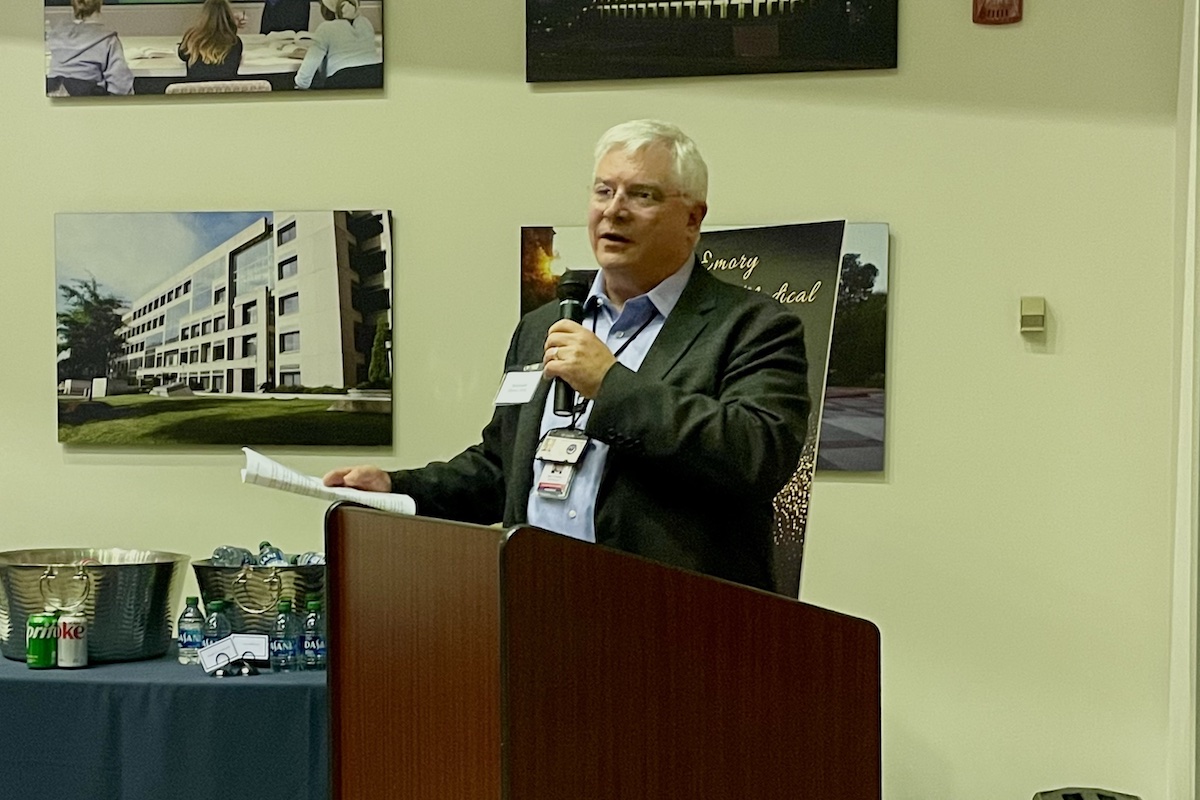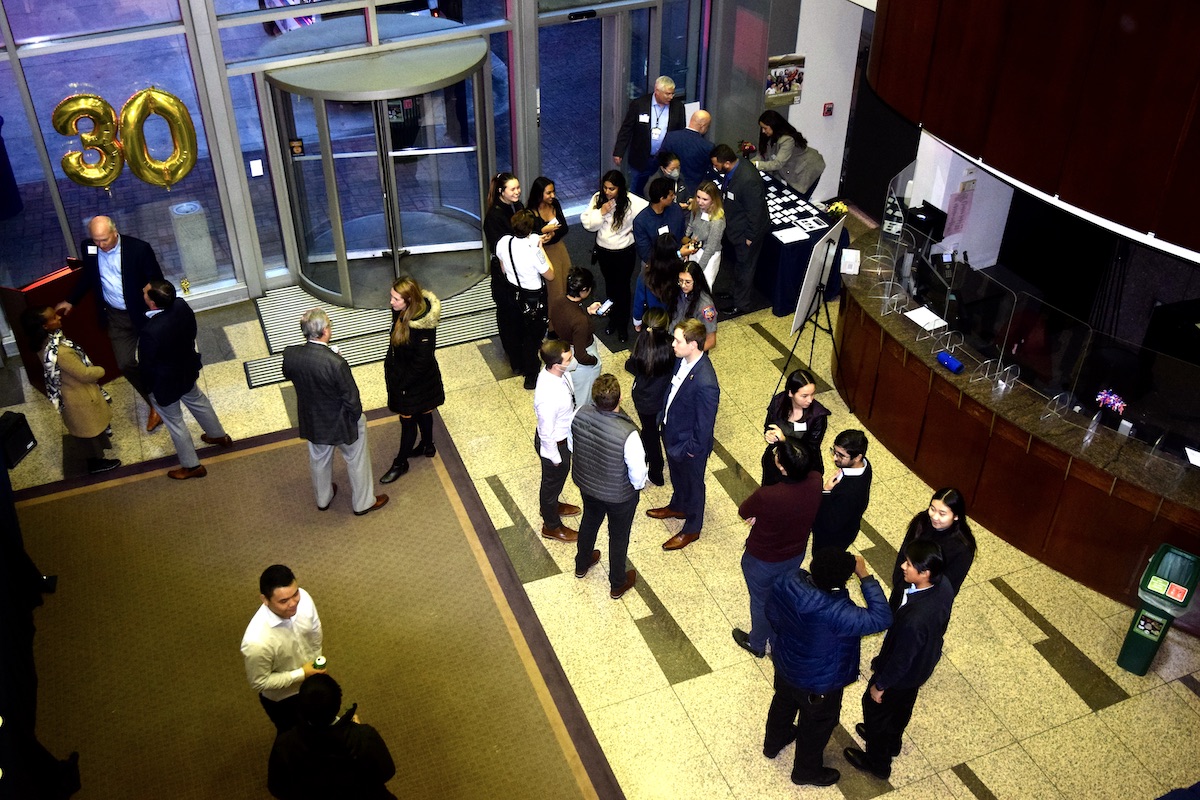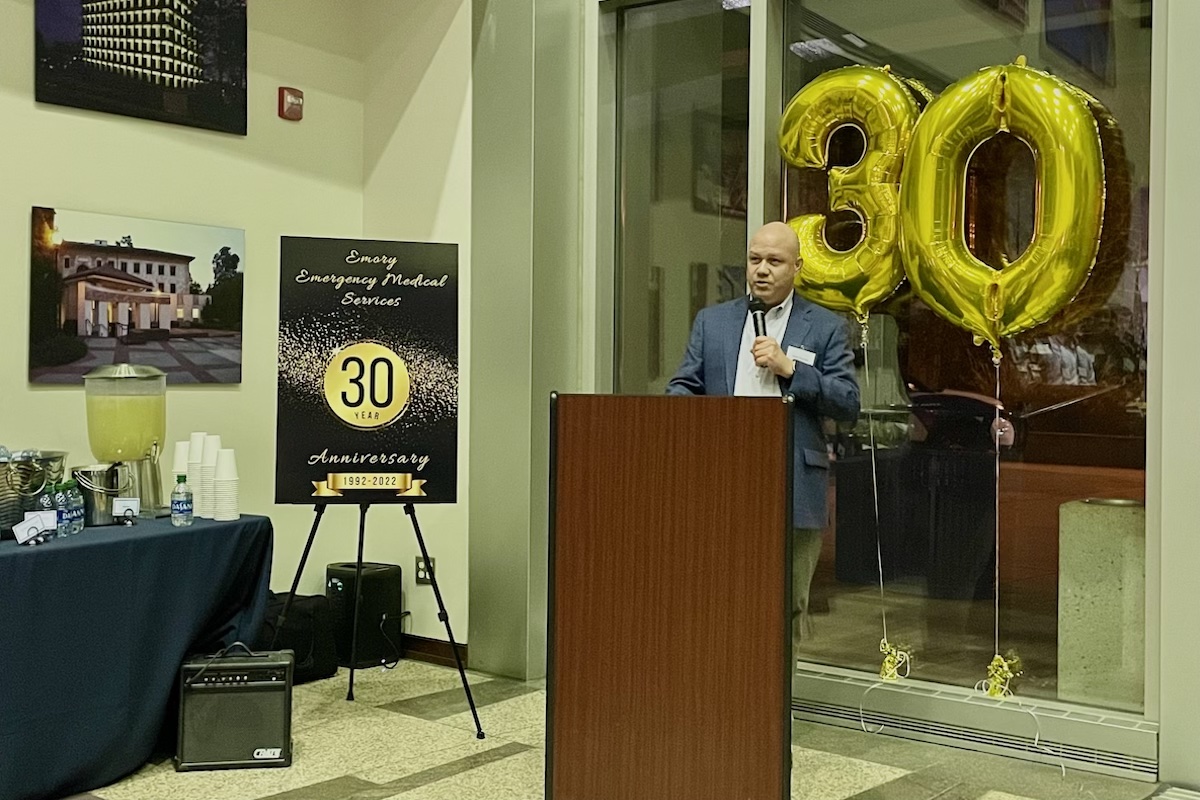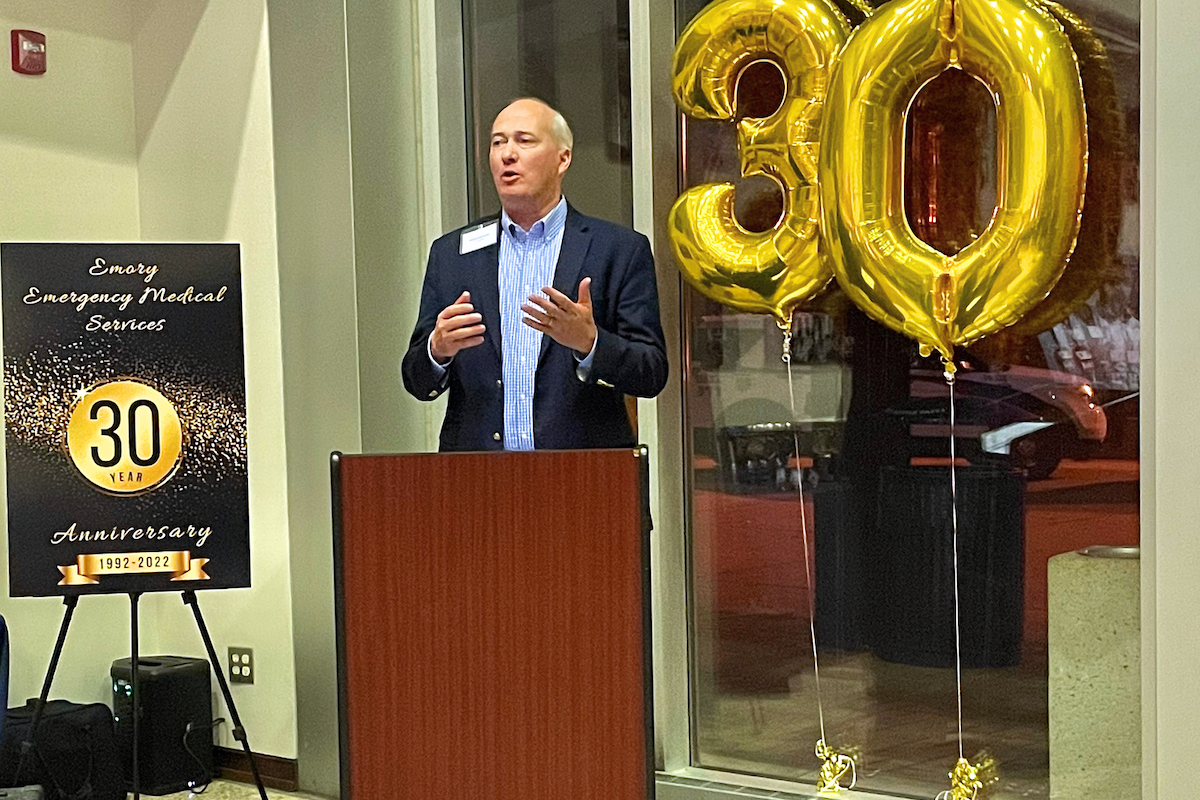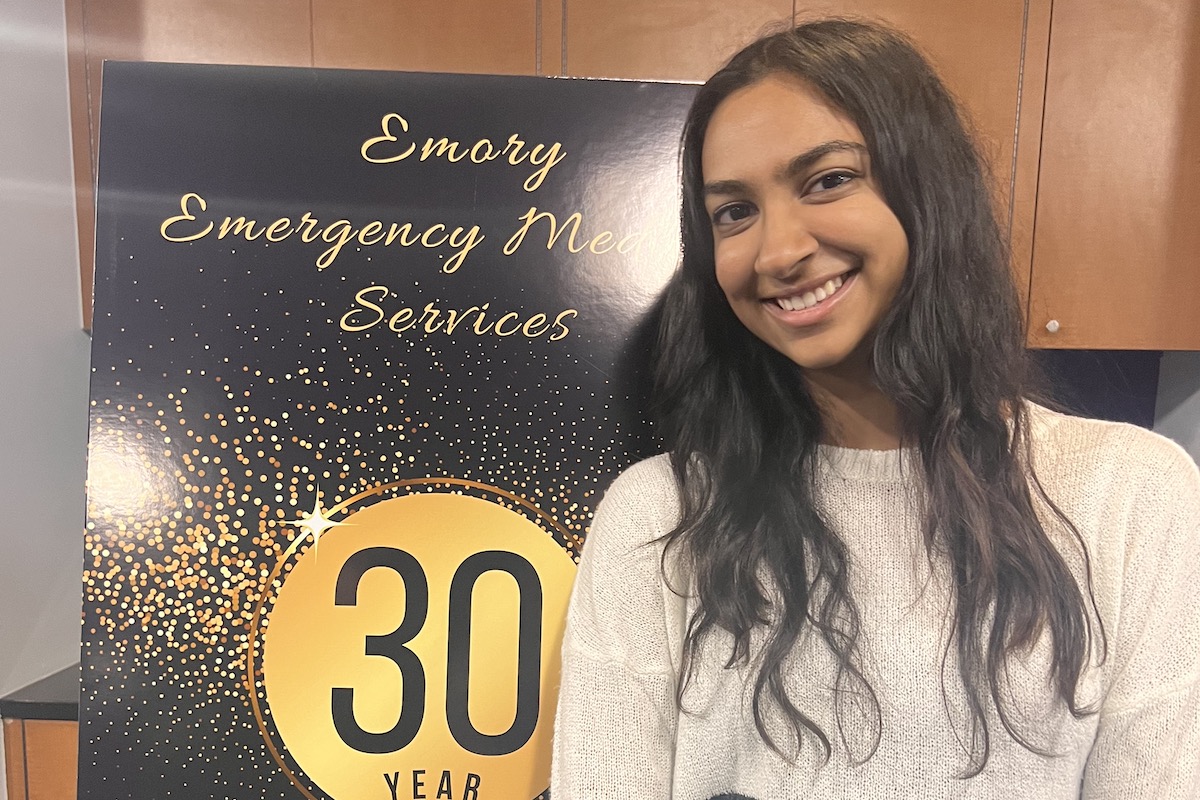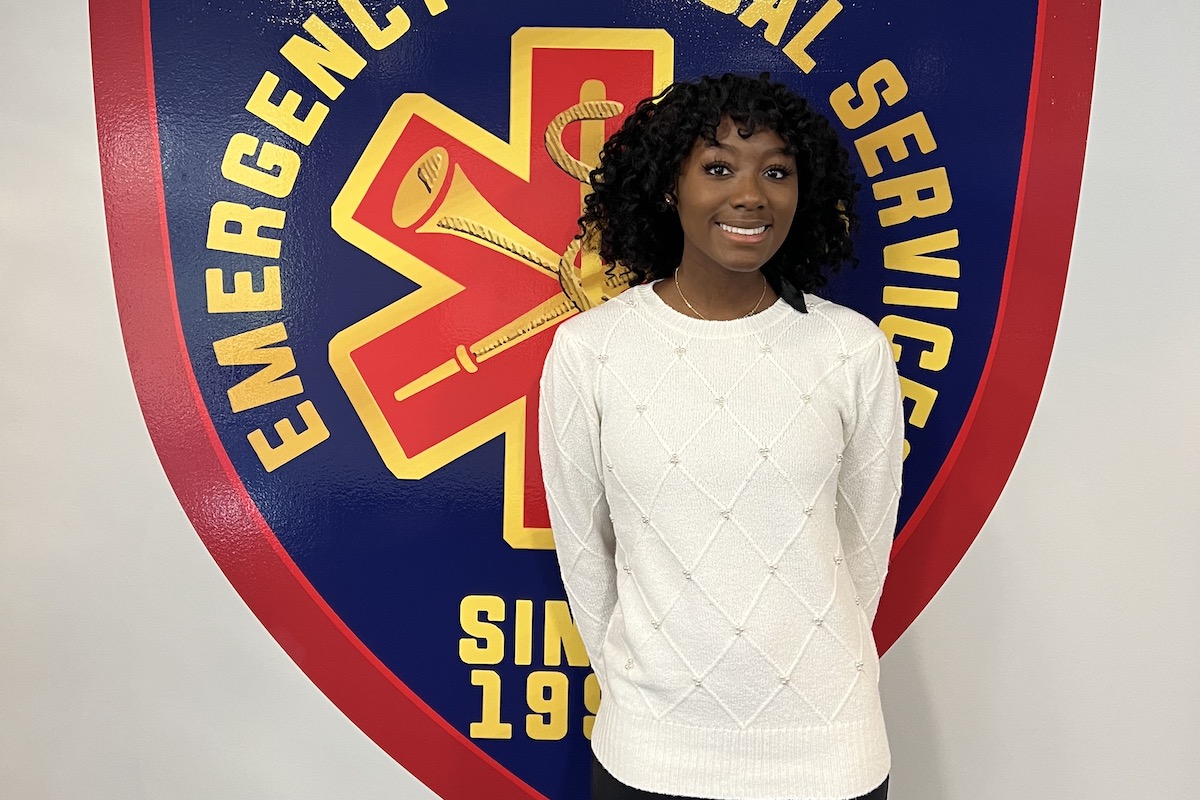Emory Emergency Medical Services (EEMS) is celebrating 30 years of saving lives and making a difference in the community — and it’s the only collegiate EMS program in Georgia.
Sam Shartar, senior director of operations for the Emory Office of Critical Event Preparedness and Response (CEPAR), serves as the EMS Director and oversees the program. He emphasizes that it’s student-run and student-led. Reinforcing his point are those on the command staff, each of whom has “chief” in their title. This year four women hold the roles.
“These students are carrying a full academic load, meeting minimum work requirements for the EEMS program, and receive additional training. They have such positive attitudes and demonstrate servant leadership every day,” Shartar says. “We [CEPAR staff] provide guidance and administrative oversight. With our own EMS backgrounds, we can keep them aligned and teach them — but the program is managed by the students, and they all work collectively to make this system run efficiently.”
The program’s beginning
The program (originally called Emory First Responder Unit) was officially launched in 1992 by Roger Neustadt, an Emory law student and EMT. Neustadt recognized the need for a timelier response to campus medical emergencies and worked to get buy-in from student groups. Ultimately, he submitted a proposal with a program budget and worked to pass legislation that legalized collegiate EMS in Georgia.
While some of the 40 original participants were already licensed EMTs and emergency medical first responders, all had an interest in serving the community.
Andrew Hawthorn, now the director of product management and EMS applications for ESO, was named as Neustadt’s successor and became the second student director of the program. “The day I moved into my dorm room in August 1991, there was a flyer on the desk that said a college-based EMS was being formed and they were looking for volunteers.” Hawthorn attended an information session and put his name on the list of people to be considered for a 40-hour training course.
“When things first started up, we were few in numbers of responders, we had very basic equipment and supplies, and we were housed right off of sorority row,” he recalls. “We had one response vehicle, a Ford Bronco, and had to request permission from the on-duty Emory PD officer in charge if we could respond with lights and sirens.” Although Neustadt started the program, Hawthorn took the program through the licensing process, taking EEMS to the professional level with its appearance, operations and partner relationships. When he left EEMS after graduation, the organization was certified by the Georgia State EMS Office as a First Responder Agency.
Hawthorn, who graduated from Emory’s psychology program in 1995, was a practicing paramedic in the Houston area for 14 years in addition to working professionally at Dell and HP. In 2019, his profession and hobby merged and he joined ESO, a software company in Austin, Texas, where he is responsible for the strategy and roadmap execution for a suite of software products for EMS.
Christopher Nunn was also involved from the early days. “Many people misunderstand the benefits of EEMS as being solely medical training and helping prepare students to go to nursing school or medical school. In addition to those hard skills and the ability to provide prehospital care, participants also gain leadership, critical thinking and problem-solving skills and develop a deeper sense of empathy,” he says.
Those additional skills are demonstrated throughout the alumni base, which encompasses a variety of career paths — including many nonmedical ones. Case in point: Nunn, who graduated from Emory College of Arts and Sciences in 1996, now serves as commissioner of the Georgia Department of Community Affairs. That’s the beauty of this program, he says: it builds a broadened sense of community responsibility.
Hawthorn emphasizes a similar point. “Emory EMS isn’t just about responding to emergencies on campus — that may be the day-to-day routine, but the life and leadership skills learned are immeasurable.”
Today’s first responders
Today, the program consists of 89 licensed providers, 28 providers in training and a student command staff. And Neustadt’s foundational goal of timelier responses has certainly been realized. EEMS’ average response time for October 2022 was 4.9 minutes, compared to the 8–12 minutes it takes for community responders to reach a call on Emory’s campus, according to Shartar.
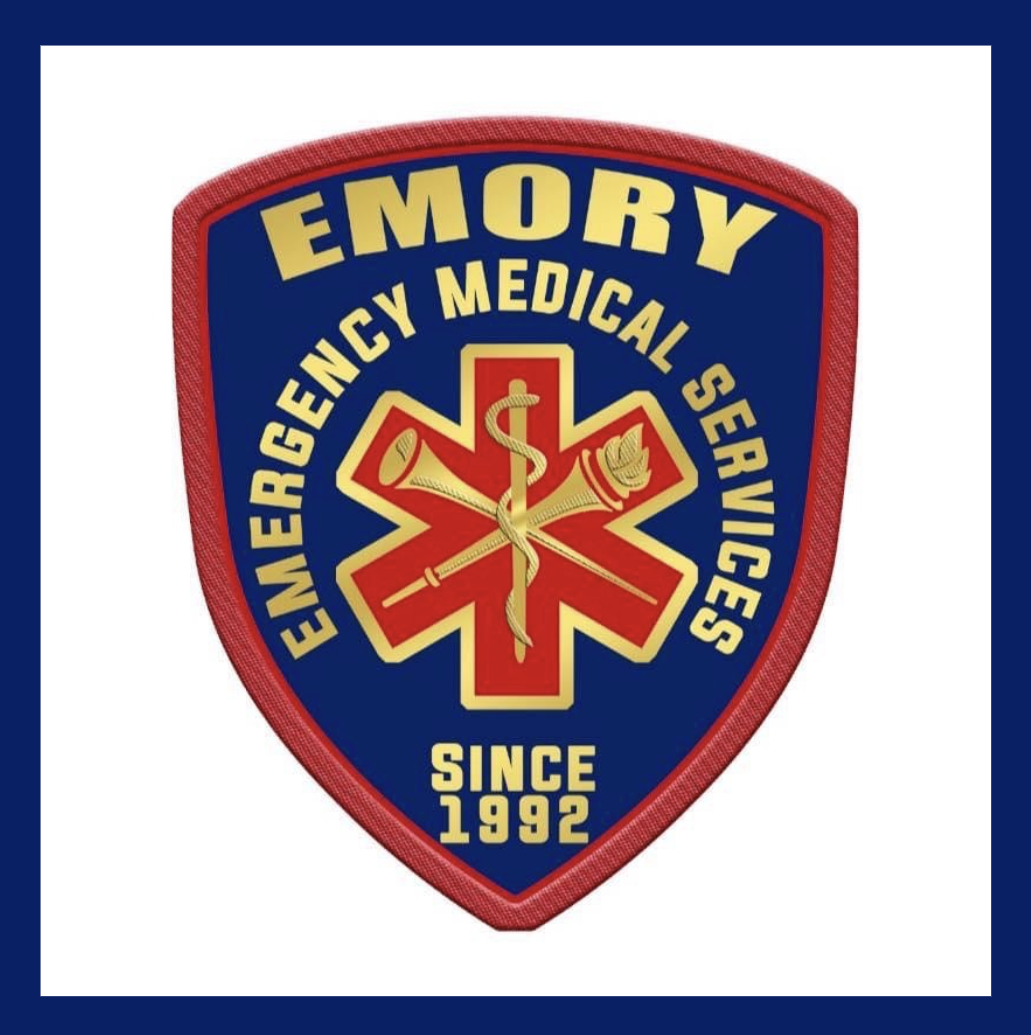
In everyday life, 10 minutes can feel like a fraction of time that easily disappears while scrolling through TikTok or checking email. But in a medical emergency, 10 minutes can be the difference between a full recovery and lifelong impairments, or even life and death.
Nitya Koduri, an EEMS field training officer and junior studying human health and biology, contextualizes the importance of response times in a recent incident.
In November, an Emory employee went into cardiac arrest in the 1599 building. “Before we got there, his [the employee’s] coworkers started compressions and placed an AED,” Koduri says. “We took over the scene when we arrived. This call exemplifies the benefit of the collaboration of the community and EMS providers to improve outcomes.”
Thanks to the EEMS’ quick response, the employee has no neurological deficits. In contrast, more than 356,000 out-of-hospital cardiac arrests happen annually in the U.S., with almost 90% of them fatal, according to the Sudden Cardiac Arrest Foundation.
Adopting a growth mindset
EEMS took a hiatus during COVID-19 but came back stronger than ever. Most of the current providers were interested in EEMS prior to the pandemic and were more than ready to join when the program returned. Now EEMS is larger than in pre-pandemic days.
In the 2021-2022 academic year, EEMS participants clocked more than 21,850 hours of volunteering between their time on campus and volunteering in the broader community, including with local Cub Scout troops and a Trunk or Treat in southwest Atlanta.
Grace Johnson, a senior from Greenville, South Carolina, majoring in human health and Spanish, is the chief of Emory EMS. “We don’t have to convince anyone to be here,” she says. “We have more than 11,000 volunteer hours this semester. Those hours say something — for an organization to get that many without paying anyone tells you just how special it is.”
As Joju Olojede, a junior from McKinney, Texas, majoring in psychology says, “EEMS is a very unique organization —we directly get to help the Emory community and offer specialized resources after patient care that are accessible to the student population." Even though we don’t transport patients, we’re usually the first ones on the scene and we can make a major difference in the 5-10 minutes while patients wait for transportation."
Looking to the future
In spring 2021, the program (which was overseen by the Emory Police Department at the time) was in jeopardy of being cut. “What that made us realize,” Nunn explains, “was that you can’t just rely on a group of 18- to 22-year-olds providing a service. You have to ensure continuity, which includes an understanding of and recommitment to the mission.”
Now, the program is overseen by CEPAR and receives funding from university allocations. Any additional donations (such as those from alumni) are leveraged for special equipment, projects and other learning opportunities for the volunteers.
Shartar explains that shifting the program under CEPAR also has allowed the students to benefit from the decades of EMS experience that CEPAR professionals hold, helping them hone skills and navigate the challenges of being first responders.
Those college-aged students are working toward program longevity, too.
When Johnson realized she wanted EEMS to be a bigger part of her life, she knew her next step was becoming chief. “I really looked up to the command staff that came before me, and the impacts that they got to have within the program in their role,” she says. “I have a lot of long-term visions for ways to build on the program and we have new resources and opportunities to change things.”
Her vision includes an increased focus on mental health responses, training and education, as well as strengthening relationships with other involved agencies, such as Emory Police Department and Fire Station 1, located next to the CDC. “I want to foster those community connections so that we can work together better as a unit,” she says.
What sets EEMS apart
Johnson also wants to clarify a few misconceptions about collegiate agencies. “We often get a bad rap for being young, but that’s one of the best things about us. We are all passionate and eager to learn. Especially after the pandemic, that’s hard to find in EMS because everyone is exhausted,” she says.
“We don’t take our responsibility lightly and are able to be better advocates for our diverse patient population because of our relationship with the Emory community,” Johnson adds. “There is a lot that goes on behind the scenes with training and operations in order to ensure that we were equipped to be there over the last 30 years and that we will still be there in the years to come.”
CEPAR provides training opportunities to equip the general public to act in an emergency. You can view the upcoming Life Support Skills Training courses on CEPAR’s website.

